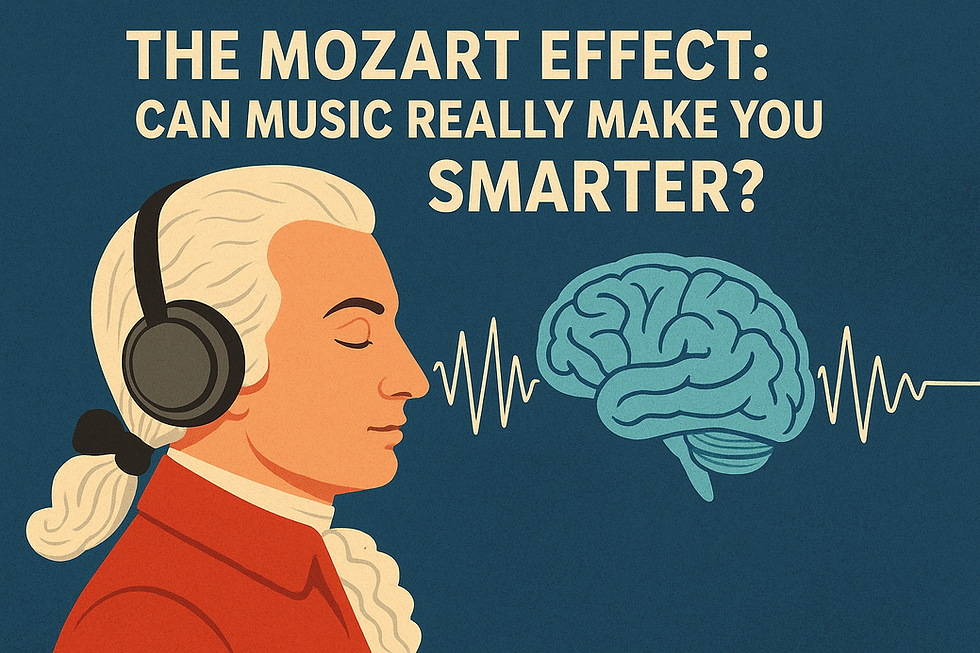"Helping Disconnected Kids Find Their Musical Voice: The Brain Balance Program"
- Sharanya naidu
- Apr 15
- 3 min read
For those of us drawn to the magic of music, we know it's more than just notes on a page. It's a symphony of coordination, rhythm, memory, and emotion, all orchestrated within the brain. But what happens when the brain's wiring presents unique challenges, as it does for children with conditions like Autism, ADHD, and Dyslexia?

The journey to musical fluency can feel steeper for these young learners. Difficulties with focus, navigating sensory information, mastering physical movements, and retaining new information can create significant obstacles in traditional music lessons.
This is where the ideas presented in programs like the Brain Balance Program, often discussed in relation to "Disconnected Kids: The Groundbreaking Brain Balance Program for Children with Autism, ADHD, Dyslexia, and Other Neurological Disorders," offer a potentially groundbreaking perspective for parents and educators in the music world.
While the book delves into a comprehensive approach for neurodevelopmental differences, its core principles resonate powerfully with the demands of learning music. The central concept of Brain Balance suggests that many neurological challenges arise from an imbalance in activity between the brain's left and right hemispheres. The program aims to correct these imbalances through specific exercises targeting physical, cognitive, and sensory skills.
Could Brain Balance Principles Fine-Tune Musical Abilities?
Think about the essential skills for learning an instrument:
Sustained Attention: Crucial for focused practice and absorbing instructions – often a hurdle for students with ADHD.
Precise Motor Skills: Necessary for accurate playing and developing good technique – which can be challenging in various neurological conditions.
Comfort with Sensory Input: Engaging with the sounds of music and the feel of an instrument can be overwhelming for some learners.
Memory Retention: Recalling musical notation, melodies, and rhythms is fundamental, and can be difficult for those with neurodevelopmental disorders.
Understanding Sequence and Timing: Grasping musical structure and rhythm requires strong sequential processing abilities.
By focusing on strengthening weaker brain areas and improving communication between the hemispheres, the Brain Balance approach could potentially address these foundational challenges, making the world of music more accessible and enjoyable for these students.
Imagine a young musician:
With ADHD finding it easier to maintain focus during practice and follow their teacher's guidance.
With Dyslexia developing improved visual-spatial skills, which could aid in reading music.
With Autism feeling more at ease with the sensory experiences of playing and finding a new avenue for self-expression through music.
Facing motor coordination challenges experiencing greater dexterity and control over their instrument.
Important Notes for Music Teachers and Parents:
While the potential benefits are exciting, it's vital to approach the Brain Balance concept thoughtfully:
Evidence-Based Approach: It's crucial to investigate the scientific research supporting the Brain Balance program and consult with medical professionals and educational experts.
Individualized Learning: Every child learns differently. What benefits one student may not suit another. A personalized approach to music education, incorporating strategies tailored to specific needs, is always paramount.
Teamwork is Key: Open communication and collaboration between parents, music teachers, therapists, and other specialists are essential for creating a supportive and effective learning environment.
The Power of Music Therapy: It's also important to remember that music therapy is a well-established field that uses music to address a wide range of therapeutic goals, including those related to neurological development. Exploring music therapy could be another valuable path.
A Symphony of Possibilities:
The musical journey for children with unique neurological profiles may present distinct challenges, but it is also rich with potential. Exploring approaches like Brain Balance, alongside patient teaching, adaptive methods, and a nurturing environment, could unlock new doors to musical expression and joy.
As music educators and supportive parents, let's remain curious and continue to seek innovative ways to help every child discover their own unique musical voice.
What are your thoughts? Have you worked with students who might benefit from approaches like Brain Balance? Share your experiences and insights in the comments below!



Comments